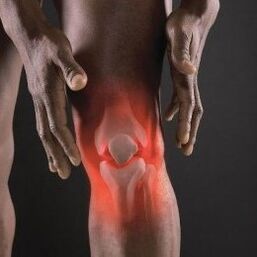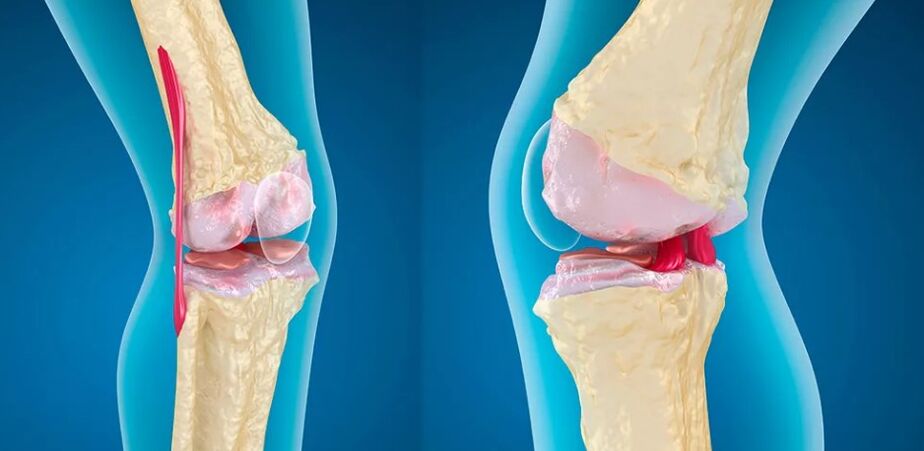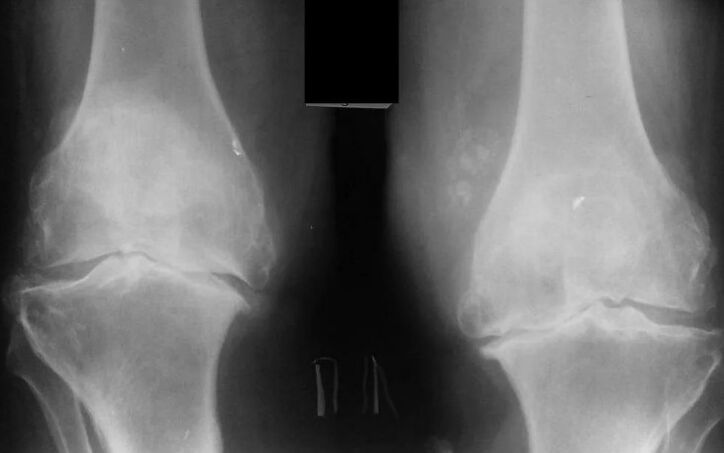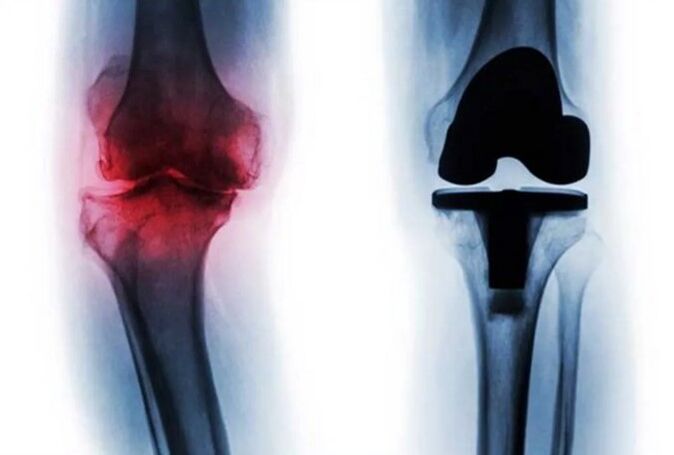Arthrosis is a degenerative -dynish disease of the joints characterized by a slow and progressive destruction of intraarticular cartilage. Arthrosis includes a group of destroying inflammatory arthritis, which have different causes and similar mechanisms of development.
Arthrosis is one of the most common diseases in the world that takes a leading position in women and men under 30 years of age, and the risk of developing the disease is increased only at age.
The causes of pathology
Arthrosis develops in the joints as a result of metabolism violations, with the background of which the intraarticular cartilage begins to lose water and will not be flexible. The predisposing factors of such changes of cartilage can be internal and external causes:
- hormonal changes;
- age -related qualities;
- genetic predisposition;
- rheumatoid arthritis;
- Excessive joint load;
- injuries and damage - fractures of disals, fractures, severe bruises, leagues;
- Metabolism in obesity -related metabolism, diabetes mellitus;
- hypothermia;
- a lower and unbalanced diet that resulted in the body does not receive calcium, omega-3 and 6, fats and proteins;
- an inflammatory process in the joint;
- Violation of the blood supply of the femur - Pertes - Pertes;
- problems of blood coagulation, hereditary diseases;
- Autoimmune Diseases - Red Lupus, Rheumatoid Arthritis.
Specific diseases that have nothing to do with the joints, namely: namely: namely:
- syphilis;
- hyperthyroidism;
- Thyroid inflammation.
Endangered people are people who deal with heavy physical labor, constantly compel hypothermia and experience increased burden on muscle-bone miners, blacksmiths, athletes, movers and pregnant women.
Joint symptoms
The first symptom of arthrosis is the pain of the smallest load of the joint, which quickly disappears as soon as the joint is left alone. Arthrosis is characterized by 4 basic clinical symptoms:

- Pain - Arthrosis pain has certain characteristics, unlike pain, when the joint or inflammatory process is randomly crushed. Above all, you should pay attention to the incidence of discomfort and pain, with any movement and the load on the affected joint. It is worth stopping a person to move and remove the load, as the pain disappears immediately, which does not occur when they are injured or inflammation of the joint. At night, the collapsing joint does not cause discomfort to the patient, painful feelings are only possible if the body's position changes but passes quickly. With the explicit progress of the devastating processes, sharp pains in the joint can occur, which eventually become stronger and set up a lifestyle. Acute pain occurs at the time of weather conditions, moon phases, and at the lowest load.
- Crystal - This sound appears as a result of a reduction in the softness of the bones around the joint, which leads to friction of the bones and leads to a distinctive crunch. As degenerative processes progress in the joint, crunching becomes more pronounced and painful.
- Limiting joint mobility - during the initial stages of the pathological process of cried mobility restrictions, but by destroying the joint, it is increasingly difficult for the patient to perform simple acts. Finally, the affected joint is completely immobilized.
- Joint deformation - osteophytes are actively increasing on the bone surface and synovial fluid accumulates. The deformation of the joint is observed in advanced pathological process.
Degenerative processes in the joint do not develop rapidly, the disease is characterized by stages of aggravation and remission, from which patients do not hurry to seek medical attention, thus contributing to the progress of destructive processes in the joint.
Stage
The stage of the progression of the pathological process is determined by the X -Ray test in the joint. Only 4 stages of the disease can be distinguished:
- First, it is characterized by a slight narrowing of the joint gap, while the bones have no pathological growth;
- The second - slight narrowing of the joint gap, the osteophytes are formed on the bone surface;
- The third - the joint gap is narrowed, the bones are multiple osteophytes, the joint is observed;
- The fourth - virtually no joint gap, there are several osteophytes, pronounced joint deformation.

Degree
Arthrosis is expressed in the form of degenerative destruction processes in the joint, which results in the cartilage, changes in the capsule and synovial joints of the joint, and changes in the tapes and bone structures around it. Depending on the severity and severity of this destruction, it is customary to distinguish between 3 degrees of joint.
The first grade
There is no pronounced deformation or changes in the joint, but the composition of the synovial fluid is disturbed - this leads to insufficient provision of joint tissues with nutrients, water, water and micronutrients, which results in the cartilage not elastic and does not adapt to the cargo. Over time, it causes inflammatory processes and is painful during exercise and joint load.
In the first degree of arthrosis, no one is looking for medical help, discomfort and pain attributed to the unpleasant pose during sleep, fatigue and improper lifestyle. Sometimes the patient may notice the characteristic crackling in the affected joint, but this is not accompanied by severe pain, but only with the discomfort that no one pays for considerable attention.
If arthrosis is accidentally diagnosed at the first stage, the disease can be easily treated.
The second grade
At this stage, the disease is accompanied by the devastating process of the cartilage tissue inside the joint. Osteophytes grow intensely on the bone surface, and the more intense the load on the zone of damage, the more pronounced the destruction.
At the same time, the patient complains of real pain, which regularly passes on his own and cannot feel for a long time. Then the disease progresses again. Based on the background of such an abnormal process, the muscles surrounding the inflamed joint gradually lose their functions, from which the patient is quickly tired and is unable to resist the physical activity, which is previously easily tolerated. In the second degree of arthrosis, the patient gradually progresses the deformation of the cartilage and joint.
The third grade
This is the hardest. The intraarticular cartilage of the affected joint is thinner and intensely destroyed, which is clearly noticeable for deformation and the impaired functions of the affected limb. Ligaments and muscles next to the joints are nutrients and lack of oxygen, as well as gradually atrophy, accompanied by an outstanding loss of mobility. At the same time, the patient is always tortured by acute pain, which is improved by any attempt to change the body's position, changes in weather conditions and moon phases, and gradually leads to a complete loss of legal ability.

Arthritis
Depending on the cause of the pathological process, primary arthrosis, secondary and idiopathic can be distinguished inside the joint.
The primary independent disease develops as a secondary disease as a result of injury or infection, and the cause of the idiopathic form is unknown. In addition to classification of the disease, depending on the cause of the pathological process, arthrosis can be distinguished instead of localization of devastating changes:
- Gonarthrosis is the most common type of pathology characterized by damage to the knee joints. Most often gonarthrosis is detected in excessive people, chronic metabolic diseases in the body and poor immunity. The knee arthrosis progresses for a long time and gradually leads to the complete loss of motor function.
- Ankle arthrosis - the main causes of developing degenerative processes of the ankle joint injuries, dislocations, stretching, fractures. In some cases, the development of the pathological process can provoke autoimmune disease - rheumatoid arthritis. Ankle arthrosis is prone to dancers, high heels, and athletes.
- The main causes of degenerative processes in the shoulder joint arthrosis in this area, the congenital disorders of the shoulder joint or excessive loads, for example, is difficult to wear on the shoulders.
- Coksartrosis or hip arthrosis - the main reason for the occurrence of age -related changes in the joint tissues. People over 45 are at risk.
- The cervical region of arthrosis - the causes of cervical injuries, progressive osteochondrosis, obesity, sedentary lifestyle. People working on a computer are in danger in offices. In addition to severe cervical pain, patients also pronounce dizziness, inhibition of consciousness, memory damage and fatigue. These symptoms are given from the compression of the spinal artery through which nutrients and oxygen enter the brain.
- Spondylarthrosis - The devastating destruction is subjected to the tissues of the spinal column, namely the lumbar class. In a woman's risk group during the occurrence of menopause, as spondylarthosis progresses in the background of the lack of female sex hormones.
- The fingers are osteoarthrosis - it develops for the same reason as spondylarthrosis.
- Polyarthrosis - which is characterized by damage to multiple joints, which contain progressive degenerative processes, while the ligaments, muscles and tissue joint surrounding the abnormal process.

Treatment of joint treatment
Treatment of arthrosis is best in the early stages, then the disease fails to fail the conservative therapeutic methods. It is very important to correctly determine the cause of the joint progressive devastating changes and stop these factors in time.
The treatment of arthrosis is comprehensive and the elimination of the inflammatory process, stopping the pain syndrome, stopping the progress of the pathological process and stopping the restoration of lost joint functions. Conservative treatment includes the selection of drugs and physiotherapy methods.
Drug treatment
Treatment of arthrosis is different from the different locations of the pathological process:
- Arthrosis of the fingers and hands -the non -steroid anti -inflammatory drugs in the form of cream, gel ointment. Chondroprotectors technique is displayed to prevent the pathological process from progressing. After stopping the acute inflammatory process, massage and physiotherapy are prescribed.
- Arthrosis of the shoulder joint, the patient is injected inside the joint with analgesics and non -steroid anti -inflammatory drugs. In time, you can prescribe intake drugs that relax the muscles and slightly reduce the intensity of the pain. After relieving acute inflammation and pain, physiotherapy and massage are warranted.
- The knee joint arthrosis -writ non -steroidal anti -inflammatory drugs locally in the type of compression, ointments, gels. The area of the affected joint shows the physiotherapy methods of treatment.
- Arthrosis of the hip joint - compressions impregnated with ointments or gel from the NSAID group are used to the lesion area and analgesics injected into the joint.
- Artrrosis of the knee joint and analgesic gels is used to the zone of damage and physiotherapy treatment is indicated after the alleviation of acute pain and inflammation.
- Ankle arthrosis - the patient is recommended by a strict bed rest with the maximum rest of the affected joint. As the acute inflammatory process disappears, physiotherapy procedures, baths, massage are prescribed.

Physiotherapy
Effective physiotherapy methods often used in various gravity of arthrosis, as follows:
- Shock wave treatment-effectively eliminates the patient from the growth of osteophytes, thus eliminating the pain and restrictions of joint mobility;
- Muscle stimulation around the affected joints around the electrical joint is very effective for patients with limited mobility in pronounced, and allows for improvement of blood circulation in the joint, accelerates regenerating processes, increases muscle tone;
- Ozonotherapy - a gas mixture is introduced into the cavity of the affected joint, which causes the patient to decrease, normalize the joint mobility, and signs of inflammation disappear. For maximum effect, ozone therapy is carried out in courses;
- Phonophoresis - Effect of damage to ultrasound waves using drugs. This method of using medicines is much more effective as ultrasonic waves deliver the drug directly to the lesion.
In addition, physics therapy involves exercise, massages, manual therapy, mechanotherapy.
Diet
The joint diet should be the most balanced and in the richest fatty acids, proteins, and trace elements. We recommend that you contain fresh fish, vegetable oils, cottage cheese, dairy products, meat, fresh vegetables and fruits in the diet.
Flour products and "fast" carbohydrates, chocolate, coffee, alcohol, pork, fat and sharp foods should be excluded from the diet.



















